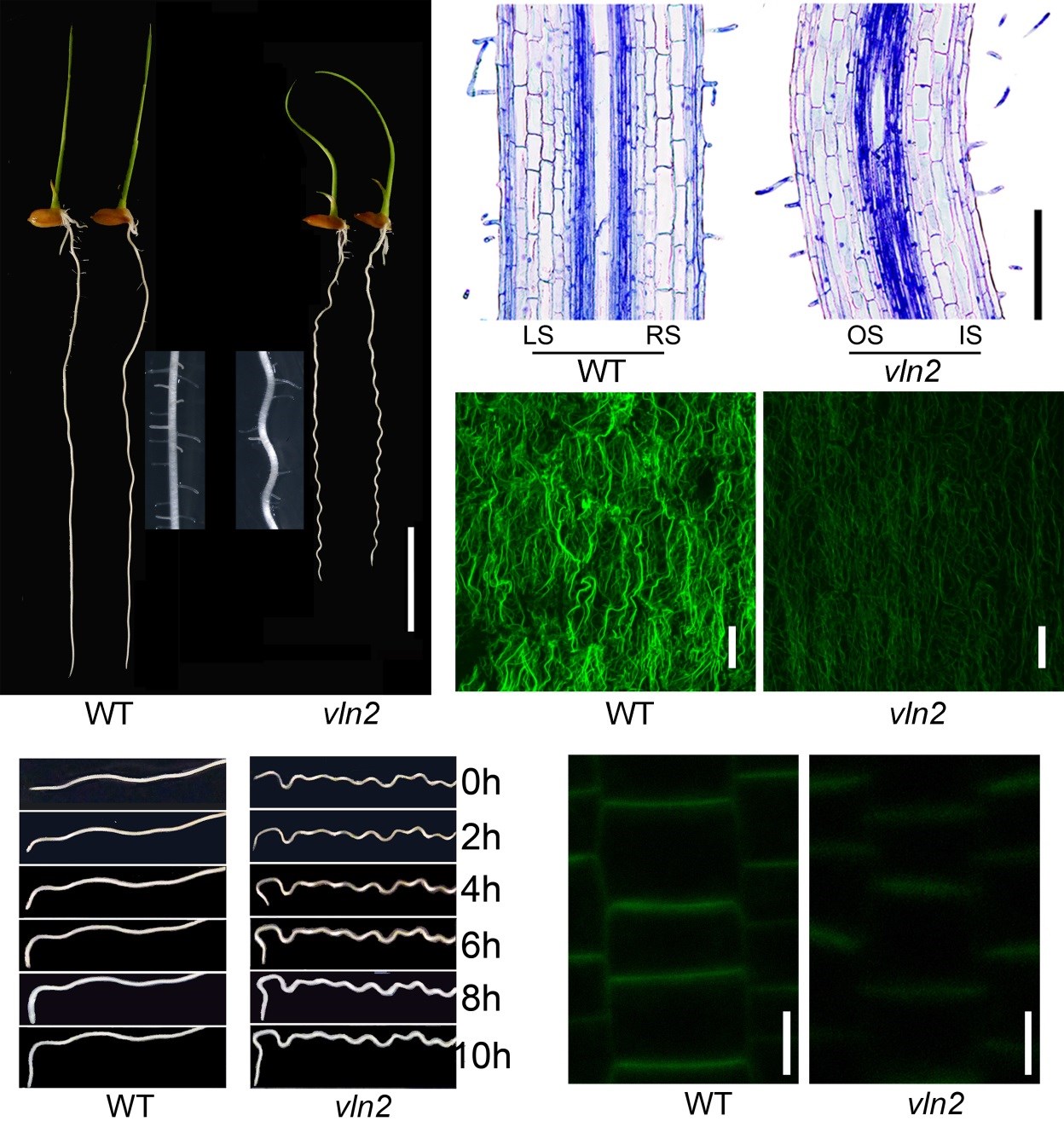Scientists reveal VILLIN2 as a master builder in rice
Date:2015-11-03Author:AdminSource:ICS
Cytoskeleton is an important system in supporting the specialized cell morphology of a given organ. The plant cytoskeleton, mainly composed of microtubules and microfilaments (MFs), plays a critical role in regulating nearly all cellular activities, such as intracellular transport of organelles and vesicles, mitotic and meiotic cell division, and cell growth. However, the role of MFs in directed organogenesis and its underlying mechanism remain largely elusive, especially in crop plants. Recently, the Innovation Team of Crop Functional Genomics from Institute of Crop Science (ICS) of Chinese Academy of Agricultural Sciences (CAAS) has made a progress in identifying genetic linkage between MFs, auxin and organ growth.
To investigate the molecular mechanisms governing the assembly of plant architecture in rice, a mutant, designated as villin2 (vln2), was isolated by the team. vln2 displays organ malformations, such as twisted roots and shoots. Microscopy analysis revealed that the twisted mutant phenotype is caused by asymmetrical cell expansion on the opposite sides of a given organ. vln2 was cloned and VLN2 encodes a villin-like protein that retains the overall molecular structure of villins with six conserved gelsolin repeats (G1 to G6) and a villin headpiece. They have shown that VLN2 is capable of bundling, capping, and severing actin filaments and plays an important role in bundling actin filaments in vivo. Furthermore, the team observed a more dynamic actin cytoskeleton, hypergravitropism, faster recycling of PIN2, altered auxin distribution pattern, and impaired polar auxin transport in vln2 roots, which may explain the twisted or undulated phenotype.Thus, they have established a genetic link between MF dynamics, auxin transport, and directed organ growth in rice.


This work proved a possible mechanism that how plant architecture was regulated by microfilaments, which would benefit researches on plant growth and development, and on crops improvement.
The paper was published in The Plant Cell (http://www.plantcell.org/cgi/doi/10.1105/tpc.15.00581) and highlighted as an In Brief article by the journal’s science editor. This research was supported by grants from National Natural Science Foundation (31371601 and 31125004), the National Transformation Science and Technology Program (2014ZX08009-003 and 2014ZX08010-004) and the 863 Program (2011AA101101).
